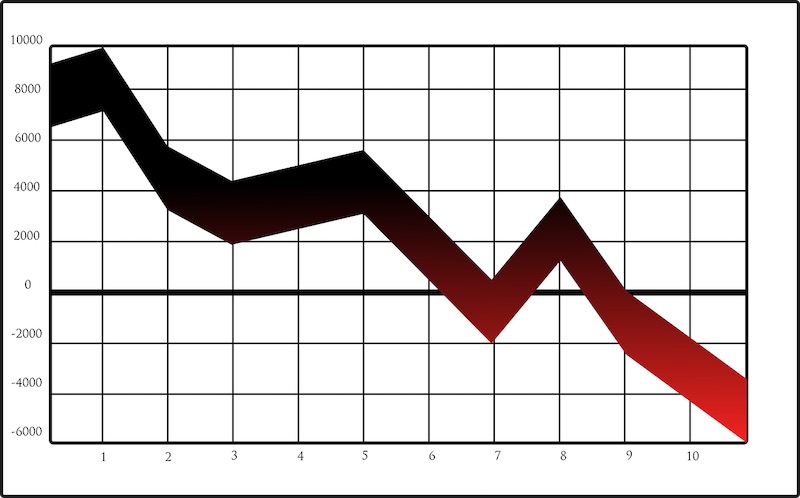The world is gripped by the current coronavirus crisis – with the FTSE 100 already enduring the third worst week in its history. The only two dates worse are enough to send a shudder down the spine of anyone familiar with the vagaries of the markets – 1987 and 2008, two years of acute global crisis.
Yet, while it’s easy to get stuck in the doom and gloom of the never-ending news cycle, it can be instructive to look at the lessons of the past. While history doesn’t repeat itself, it can rhyme – and if we are about to enter another period of financial difficult then it pays – quite literally – to be prepared.
The 2008 housing crisis…is it even over yet?
First things first, have we all fully understood the last big crisis? Indeed, are we even over the 2008 crisis? Wages, GDP and unemployment might have slowly returned to their pre-crash levels in the UK, but there’s been a longer-term issue with productivity – and interest rates have been held at record lows ever since in a bid to stimulate growth. Policymakers have been living in the shadow of 2008 in the dozen years since and few have wanted to move fully away from the post-crisis settlement. In the UK, there’s been much talk of ‘ending austerity’ – but this hasn’t always been backed up with tangible action to reverse cuts to state spending, for example. Any response to a new crisis has to be seen through the prism of the last.
There are also still lessons to learn from the nature of the crisis too. There’s a reason why IG picked the Big Short by Michael Lewis as one of its top ten trading books. Yes, it’s the book that inspired a film and, yes, it’s great if you have little or no background knowledge but, you know what? It’s also great for people who do have a working knowledge of the markets too. It helps you to understand how, in Lewis’ words ‘the closer you were to the market, the harder it was to perceive its folly’ and how a system can seemingly be working well right up until the crucial moment when it collapses.
The book encourages us to take a step back and challenge ‘the way things are’ – understanding the assets we invest in and what their weaknesses are.
The dot com boom 20 years on

It’s now just over 20 years ago since the infamous dotcom bubble burst – the collapse of the euphoria surrounding internet-related companies in the late 1990s. While, in some respects, the hype was right – with the benefit of two decades’ hindsight we can all see the transformative impact of technological innovation – the bubble it gave birth to was completely unsustainable at the time. Indeed, more than half of the internet companies set up after 1995 had completely disappeared by 2004.
Writing for the Irish Times, Proinsias O’Mahony pinpoints a number of key lessons we can take from that crisis – not least an appreciation that the markets can ‘go mad’ (for other evidence of this see everything from 17th century tulips to bitcoin). O’Mahony puts this down as a ‘combination of incompetence and exuberance’ – factors that are always worth looking out for when explaining a crisis. Most of all, however, O’Mahony rightly notes how it’s vital not to get carried away by the perceived wisdom of the present day – companies can, and do, lose their dominant positions if the market moves against them.
Why we’re still shaped by 1929
It isn’t just by looking at the recent past that we can see important lessons to apply to the markets – the history books can tell us much about the present day too. The 1929 Wall Street Crash has passed into infamy, with its causes and effects long studied by pupils looking to understand the turbulent inter-war period.
1929 might be nearly a century ago, but it still seems current when looking at the way policymakers react to crises. Henley Business School Emeritus Professor Brian Scott-Quinn noted: “What we do know is that the Great Depression taught us that monetary policy is critical in assisting with the task of preventing a downturn in the economy turning into a deep recession.”
Banks, political leaders and economists alike continue to turn to monetary policy as a way to ease economic strife – and the Bank Of England has already moved to reduce interest rates to 0.25%, with talk of a further reduction to rates as low as 0.01 per cent. It’s clear that monetary measures will continue to be deployed in the future as governments worldwide look to stave off a deep recession – and when those happen, the ghost of 1929 and the 1930s carries on being influential.
Disclosure: We might earn commission from qualifying purchases. The commission help keep the rest of my content free, so thank you!



